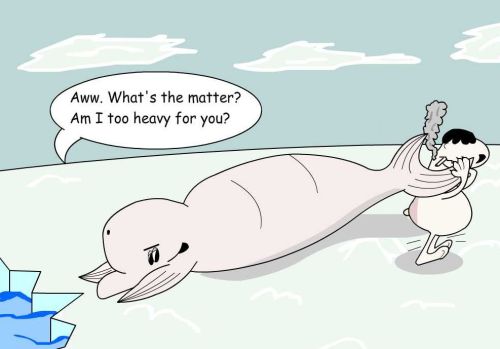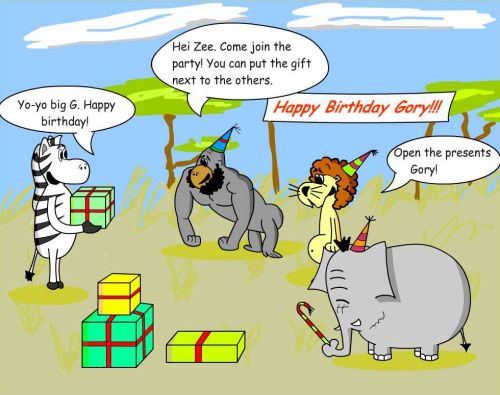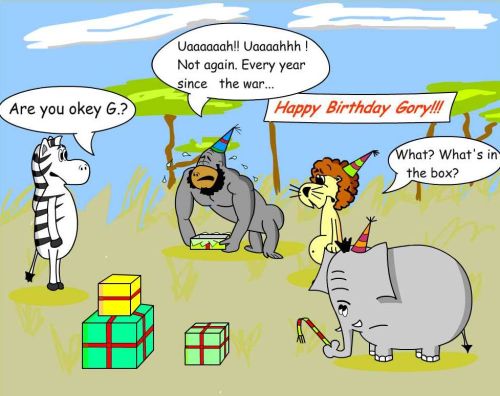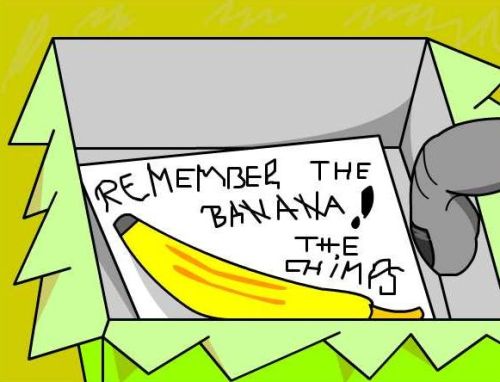
When we talk about the Scandinavian region, the first images that probably pop-up in our heads are red bearded Vikings, Swedish supermodels, Finnish mobile phones, the Northern Oil Emirates of Norway, Danish beers and Icelandic geysers. However, there is more to the story. This region, lying between the latitudes where wine is not produced anymore and where polar bears start showing up their furry faces, is one of the most economically stable and prosperous regions. Countries in this area regularly top the charts of human development, education or freedom to conduct business. But why did this region become so successful, given that the climate is harsh, the people cold and grumpy (although the Danes like to boast that they are the happiest on the Planet; just look at their faces on the bus) and the food is not exactly on top of my ‘must eat list’ (unless you prefer liver paté with onions and fish-balls).
Well in order for a society to prosper factors such as natural resources, social cohesion, religion, moral codes, education and so on play an important role. Let’s start with some of them.
a) Natural resources – When it comes to natural resources, Denmark is not the ‘richest’ of the Northern lands. It is tiny, flat and has a bit of coal, wind for energy and some oil in the North Sea, but not too much. On the other hand, countries like Finland and Sweden are almost the size of or bigger than Germany (which is huge in European terms) and have vast forests, coal, iron and even fairly good agricultural lands in Southern Sweden. But the all-time big winners are the Northern Oil Emirates of Norway. The former underdogs, who were either ruled by the Swedes or the Danes or both, became the 4th biggest producers of petroleum in the world and one of the biggest producers of natural gas. So naturally they became the richest of the five. So the first big factors are natural resources and surface area. As we can see, the tiny and resource scarce Denmark is ‘poorer’ (whatever that means here) than the way larger and oil rich Norway. However, we also forget that the Kingdom of Denmark is still sovereign of the autonomous Greenland and with the opening of the Northern Ice-caps we might just see some Danish oil interests popping up on the shores of Greenland.
b) Small population, social cohesion and trust – Now, if we check the demographics, Sweden tops the charts with a whopping 9.5 million inhabitants. For a country which is 20% bigger than Germany, it has the population of Paris. Denmark, Norway and Finland follow with their 5.5 million inhabitants, and Iceland has the population of a smaller city (they even have a website where you can check if someone is your relative so you accidentally don’t end up with your cousin after a couple of rounds of beer). Therefore, the amount of resources that these countries have (and they are quite vast) only have to be split among a small number of people. If we look at the current ethnic set-up, around 20% of the people are not Scandinavian (not counting Finland). But this is only due to the last 20-30 years of immigration. The bases of these societies were laid down by small populations, which were ethnically almost homogenous (not counting some Samis up in the north and some Germans in Southern Denmark). Therefore, the number of people and the type of people that had to be convinced to follow a certain social model was quite low. It is easier to convince 3, 4 million people in the 1950s and 60s, belonging to the same ethnic group, to follow a modern type of rich socialism, then to do so in a country of 50 million, which is also ethnically heterogeneous.
The other extremely important element is social trust. I cannot but emphasize how important this is. Some say it is dwindling in the last years, but for a person who comes from a system where the last one you trust is your government, Scandinavian countries are just a different thing. People trust their Government, the Government trusts the people and people trust one another. Given their historically small and homogenous groups, this might explain why trust is so high among people belonging to the group, but so low when it comes to people coming outside of the group. It takes ages until you befriend a Scandinavian, but if you do so, it stays for life. Social trust is also beneficial for business. I was amazed to find out that most business transactions in Denmark are carried out without lawyers and complicated contracts. Therefore, transaction costs are way lower.
c) Religion and moral conduct – now you might think why this is important, in societies that are more atheists than religious. Well because a lot of the morals that underline our societies came through religion, whether we admit it or not. And until recently, these countries were not just ethnically but religiously homogenous. Try explaining to someone like me, who comes from a city with 7 historic religious groups that in Scandinavian countries there are still concepts such as state religion, state church etc. The predominant Lutheran, protestant religion had also an effect on the working mentality and moral structure. All protestants know that you have to work hard but then again feel guilty for the wealth you acquired, so you have to give away some of it. The puritan-protestant model can also be seen in the northern states of the US and in general in the northern parts of Europe, which until this day are economically the most developed ones. Minus the catholic Austria and parts of Catholic German Switzerland and Southern Germany. But they are Germans, so quite efficient regardless of religion.
Another unwritten moral code is of course the Jante Laws. This is a set of commandments every good Scandinavian should follow, such as ‘You’re not to think you are anything special; You’re not to think you know more than us.’ It is an extremely important part of Scandinavian morals and society. And this can be seen at the workplace and during education where everyone is given equal chances and opportunities and you cannot boast or brag about your own achievements. You are as good as the ‘group’. Now tell this to a person who was used to always striving for more and being better than the ‘group’ he came from. As good as it is from a societal point of view I have two big comments. Firstly, it dis-favors individuals who excel as they will never get any reward for this. So you might kill excellence. Secondly, this mentality works in the Scandinavian ‘group’ but as anyone who has been living here for a while you will notice that the Scandinavian ‘group’ as such feels better than all the others. So these rules only apply within their group but they will make sure that you know that ‘they’ are better, than ‘you’ (plural).
d) Education and Innovation – any successful society needs a high level of education and especially Finnish students are among the best in the world. In general Scandinavian youth is well educated and you can talk to them about various topics. This is also backed-up by free education and study-grants which are given to every student, and in countries like Denmark they can amount to 700 euros a month (and are non-refundable). Leaving university one finds that research is seriously backed-up and researchers, post-docs, doctoral fellows are paid proper wages just as any other employee. The principle is quite simple: you cannot create proper research and innovation on an empty stomach. And these countries rank high when it comes to innovation concerning the environment, reforestation, recycling, renewable energies, microbiology and so on.
e) Language – Language is an important factor as well. Let’s not forget that the four Scandinavian languages are all related and at least in a written form Danish, Norwegian and Swedish are mutually understandable. Plus Icelanders learn Danish in school just as Finns learn Swedish. Besides this all Scandinavians speak excellent English (some German and French) so this means that new ideas can be dispersed more quickly and business can be done on a global scale.
f) Taxes and wealth redistribution – Taxes in all of these countries are quite high if not too high in certain countries like Denmark. People are also taxed progressively so the higher the income the more tax you have to pay. This means that wealth is redistributed at such a level that anyone earning money in one of these countries can have a decent living. This also reflects in the attitude towards work. Scandinavians are proud of any type of work they do, while in other countries certain jobs are looked down on. Besides this, the high amount of taxes provides for free education, study grants, pensions, free health-care and a social net that makes it impossible not to have a decent living. The downside of such an overly generous system is that a lot of free riders can and do abuse the system and earn more money from all sorts of benefits than an actual employed person. Study grants give everyone equal chances at getting a proper education in life but this also means that a certain number of students will ‘stay’ students as long as they can get free money from the state.
g) International cooperation and trade – Vestas, Grundfos, IKEA, Tuborg, Volvo, Carlsberg, Nokia and Statoil are just some of the internationally renowned Scandinavian businesses. All of these countries rank high when it comes to freedom of doing business and a combination of educated people, speaking foreign languages and innovating researchers, means that such companies can prosper on a global scale, bringing some of the proceeds back home. Also, all five countries are part of the European Economic Zone, three are EU Members and all of them form part of the Nordic Council. This latter means that there is a small EU within the EU and people coming from these 5 countries can easily resettle and work in any other. Besides Finland, the rest of the countries kept their currency (the Danish Kroner is pledged to the euro though) and their banks are not so exposed (not counting Iceland). The Northern Oil Emirates of Norway are even one of the biggest lenders of money, without any sovereign debt. Besides their openness to international trade and cooperation, at least Denmark and Norway are quite good at protecting their own markets, with high-level market entry barriers and quite a bad record on behalf of Denmark with complying with EU rules or opting out of many policy areas. Sweden also has state monopoly on alcohol. So besides their openness to foreign trade, they also keep their Scandinavian reserved character and try protecting the local markets as much as possible.
So there you have it. The countries that 100 years ago were mainly eating herrings and potatoes are now leading global economies. So if you don’t mind the cold and the Scandinavian cold character you might just come to one of these countries, as they seem to cope quite well with the crisis.
Aarhus, 25 April 2013



















